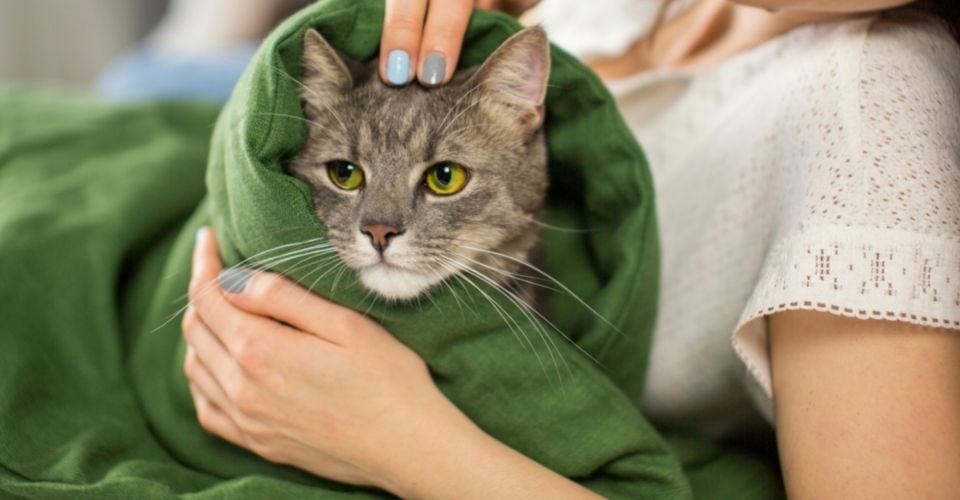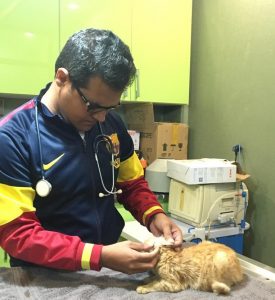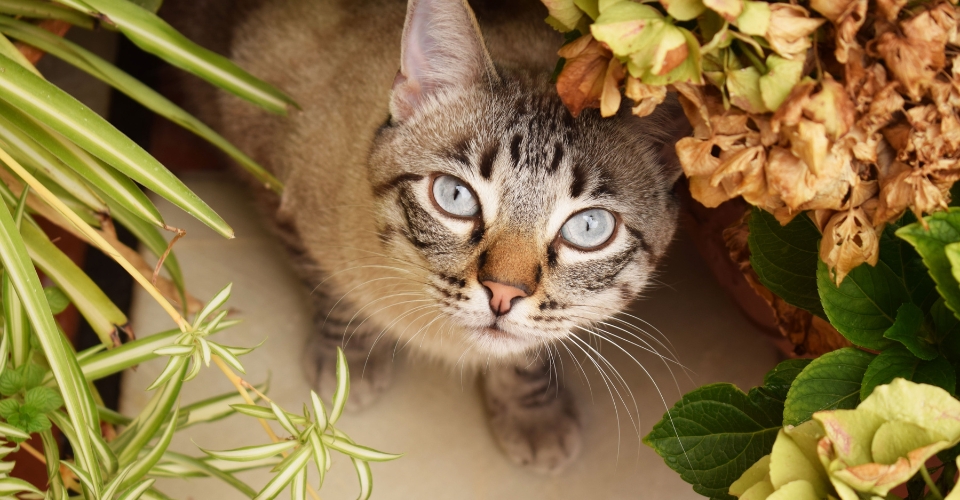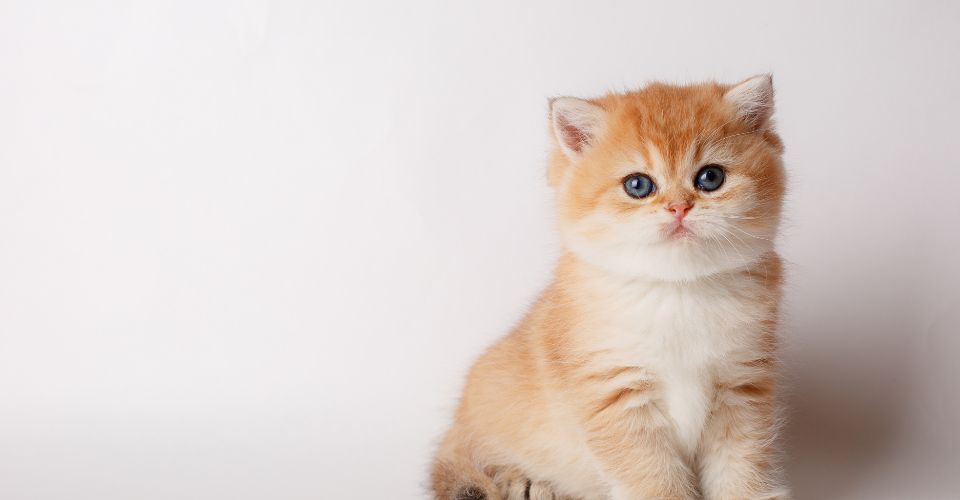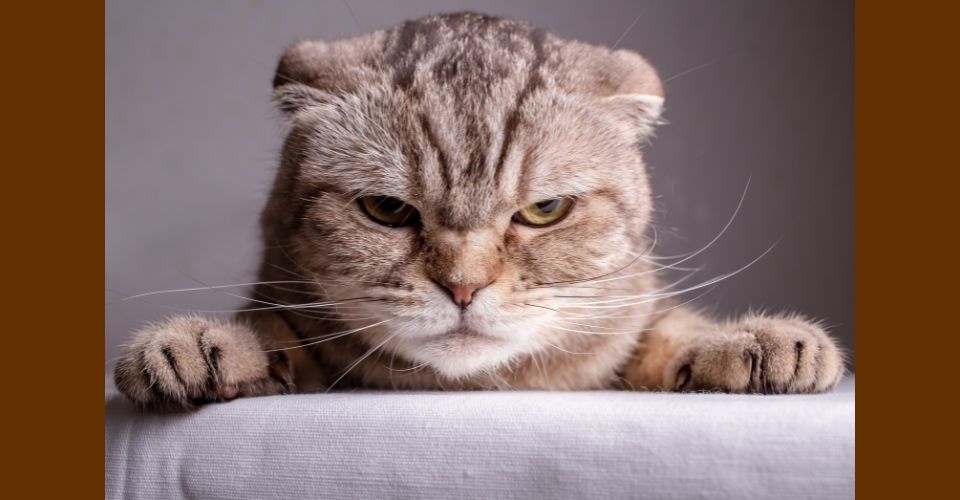Is your cat exhibiting all the signs of a pregnant cat? In a perfect world, if you are not a purebred cat breeder, a kitten would have been spayed as soon as she is weaned off. But in the real world, we tend to delay the spaying, and when the kitten gets about 4 months of age, they often come home pregnant (yes, kittens can conceive at the young age of 4 months). Spaying s pregnant cat is still an option, but that would result in termination of pregnancy, making it a controversial issue.
Whether it was an accidental pregnancy or a planned one, your cat is now pregnant, and you want to provide the best care possible. You want to make sure that the kittens growing inside your cat have a safe and sound landing into this world and your Queen suffers no complications throughout pregnancy.
Pregnant Cat Care Tips
Once pregnancy has been diagnosed, you should get extra careful of your Queen. As a responsible pet parent, you should consider the following things to help your cat with her pregnancy.
Pregnant Cat Care Tips!
- Ideally, your pregnant cat’s vaccination should be up to date, but if it is not, you should not give her any vaccination shots during pregnancy
- You should keep your pregnant or nursing cat on effective but safe deworming medicines prescribed by a vet
- Offer increased and more frequent doses of love to your pregnant cat
- Increased caloric intake—switch to kitten food and offer small but frequent meals during later stages of cat pregnancy
- In the final week of pregnancy, you should keep your cat inside so that you can observe her all the time for any signs of complication
No Vaccines for Pregnant Cat

Ideally, a mating Queen should be up-to-date on her vaccinations. Her antibodies should be at the peak level—a healthy mother with a strong immune system will pass strong immunity to the kittens. You can get your cat examined by a vet to check her antibody level before breeding her.
However, if your cat is already pregnant and some of her vaccinations are due, you should not give her vaccination shots—most vaccines can lead to significant birth defects in the kittens your Queen is carrying.
You can speak to your vet about the due vaccination of your pregnant cat. Mostly, there is nothing to worry about—unvaccinated cats give birth to healthy kittens.
Keep Your Pregnant Cat on Safe Anti-flea and Deworming Medicines
While we should keep our cats, irrespective of their pregnancy status, free of fleas and intestinal worms, it becomes even more important when our cat is expecting. Since mother cats can pass worms to kittens, you must keep your pregnant cat free of intestinal worms as well as fleas.
It is advised that you keep your pregnant cat on some effective but safe deworming medicines for cats throughout her pregnancy.
Caution!
Most cat owners often use over-the-counter cat flea and deworming medicines, which are usually fine for cats as long as you are doing it as per the given instructions. However, when the cat is pregnant or nursing her litter of kittens, you should never use over-the-counter flea or deworming medicines for cats, as some could have detrimental effects on the health of the cat and the kittens. Go only for vet-approved and vet prescribed medicines.
Pregnant Cat Fecal Test
You should have a fresh stool of your pregnant or nursing cat tested by a vet to ensure there are no intestinal worms for Queen to pass on to her kittens. If the fecal test shows evidence of worms, the vet might recommend aggressive deworming treatment for cats with worms.
Increased Doses of Love for Pregnant Cat
As discussed above, pregnant cats become more affectionate as their pregnancy hormones kick in. Your pregnant cat would always be looking for cuddles. So as a responsible pet parent, you should provide all the love and affection that your pregnant cat needs—you should let her snuggle in bed with you or lay on top of you as you are basking in the sunlight, reading a book.
That said, you should pet your cat very carefully. You should avoid the tummy area as it could cause discomfort to your Queen and may hurt the kittens growing inside her. While you should avoid picking up your pregnant cat, you should scoop her from the bottom and not the stomach if you have to.
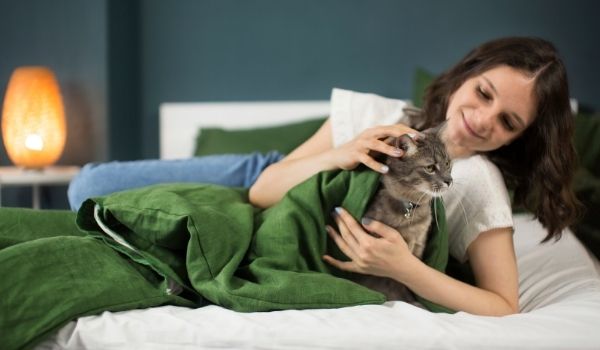
Increased Caloric Intake
As kittens develop inside your pregnant Queen, her nutritional requirements would increase rapidly. Thus, it is strongly advised that you switch either to kitten food or cat food made especially for pregnant cats as soon as pregnancy is diagnosed. You should continue increasing your cat’s caloric intake as her pregnancy progresses.
You should also keep in mind that as kittens develop inside the cat, her stomach is pressed, and thus the capacity of the pregnant cat’s stomach decrease. Therefore, you should offer small but more frequent meals to your pregnant cat in the later stages of pregnancy.
You should continue feeding kitten food to your cat even when she has delivered the kittens. You should only switch to normal cat food and start cutting on her caloric intake when your cat stops nursing.
Keep the Queen Inside in Last Week of Cat Gestation
During the last week, or to be safe, in the last two weeks of cat pregnancy, you should keep your pregnant cat confined indoors. During this period, you should monitor your cat closely so that if your cat exhibits any signs of sickness, you can take her to a vet.
For pregnant cat emergencies, you should also get your hands on the after-hours emergency contact number of your vet. So that in case of an unfortunate emergency, you could make contact and act according to your vet’s directions and help your Queen.
Postpartum Health Issues in Queen
The gestation period of 63 to 67 days, labor, and nursing kittens after birth are stressful times for Queens. A new mother goes through a whirlwind of changes as the pregnancy progresses and milk production begins. While most of the time, Queen goes through all this without experiencing any serious health issues, you should keep an eye out for different postpartum health issues in cats.
Mastitis in Nursing Cats
Mastitis in nursing cats occurs due to a bacterial infection and causes inflammation of the cat’s mammary glands. In this condition, swollen cat nipples become extremely sensitive with some visible bruising. Given the sensitivity, the mother cat will refuse to feed her kittens, and therefore, as a responsible cat parent, you will have to step in and hand-feed the kittens. Take help from our kitten feeding chart to learn how much you should be feeding your kitten, and also talk to your vet about the best Kitten Milk Replacer Formula for your kittens.
If your kitten is growing properly according to the kitten growth chart, well done—you have been a good mother to the kittens. But if the kitten is overweight or underweight and lagging on various developments, you should immediately talk to your vet and figure out what’s wrong with the kitten. You might have to change her KMR formula or change the dosage.
You should also take the Queen to a vet, who will prescribe antibiotics to fight off the infection.
Eclampsia in Nursing Cats
Eclampsia, also known as hypocalcemia and milk fever, is a life-threatening veterinary emergency requiring immediate vet attention. Though its exact causes are unknown, it is often attributed to the excessive loss of calcium in the development of the skeletons of the kittens in the litter. It is most common in nursing cats with kittens of one to four weeks of age as the Queen is producing lots of milk to feed her kittens.
Given that it is an immediate medical emergency, you should immediately take your cat to a vet who would administer intravenous calcium. And for the follow-up care, some calcium supplementations would be prescribed. You might also have to immediately wean off the kittens.
Uterine Metritis in Cats
Uterine Metritis is a severe bacterial infection in the cat’s uterus and mostly occurs about one week after the cat gives birth. It will result in the inflammation of the lining (endometrium) of the uterus. Other symptoms of this veterinary emergency include loss of milk production, fever, and foul-smelling vaginal discharge.
In this condition, the mother cat won’t be able to feed her kittens, so you will have to fill in her shoes. And if she is hospitalized for treatment, you will have to do a lot more than just bottle-feeding the kittens. Check our kitten growth chart and kitten feeding chart to learn what responsibilities fall on your shoulder as you play the role of mama cat in the Queen’s absence.

